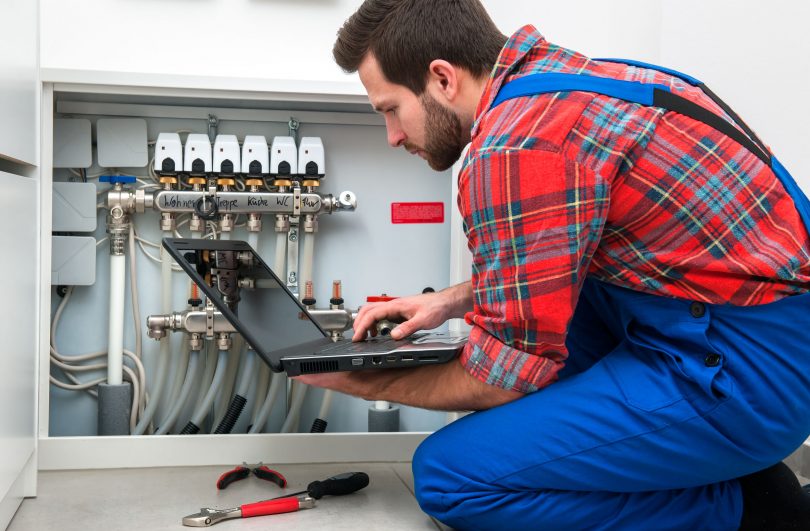You’ve found your dream house, but just because it looks good doesn’t mean that all the internal workings are in tip-top shape. This is especially true when it comes to plumbing since a nice facade can easily hide old pipes, poor caulking, and faulty installation. Therefore, even if you’re in love with your potential new home, make sure to look into the plumbing before signing on the dotted line.
Here’s how you can check the plumbing before purchasing a new home:
Hire a plumber to perform a plumbing inspection
Even though a plumbing inspection can cost a couple hundred dollars, the average cost of plumbing in a new house can easily reach $10,000, so it’s a worthwhile investment. If you’re not sure how to find a local plumber, here are some resources you can look into.
Check for mold
Mold in a house can be — but is not necessarily — a sign that there’s a leak in the plumbing. Check for mold in your new home and ask the current resident/realtor/plumber to identify the source. It may be a leaky roof, which is not great but at least it’s not connected to the plumbing. On the other hand, if it is connected to the plumbing, you’ll want to know how you can take care of it.
Ask neighbors
If you’re buying an apartment in a complex, the plumbing in all the units will be similar. Don’t be embarrassed to ask your potential new neighbors if they’re satisfied with their plumbing; this can give you an idea of what to expect. If you’re looking to buy a standalone home, inquire of your neighbors as to whether there are any sewage problems or plumbing issues on the block that you should be aware of.
Prevention
If you’re dead-set on a house but the realtor has told you that the plumbing is old, you may consider taking some preventative measures to ensure that you don’t have to install entirely new home plumbing in a few years. Prevention can include replacing old water heaters and pipes, replacing a leaky flush valve on the toilet, placing strainers in kitchen sinks, and installing a high-quality drain in the bathtub. Don’t forget to check the rubber connection hoses on your washing machine and replace it if necessary.
Keep Your Eyes Open
In addition to making sure the plumbing is in working order, make sure to run through a visual checklist of other potential problem areas in your potential new home. These can include making sure the lighting works well, that there is no damage to the kitchen counters, that the doors close properly, and more.
While no house is perfect, there are some problems that you can deal with and others that may not be worth your time and money. The decision, of course, is up to you.








